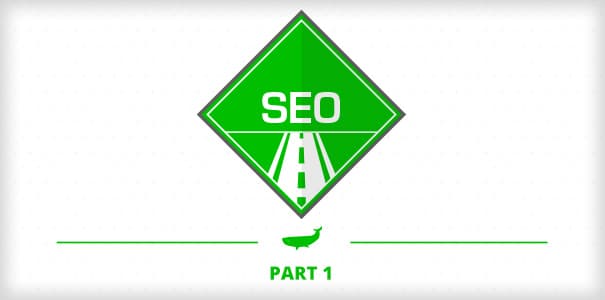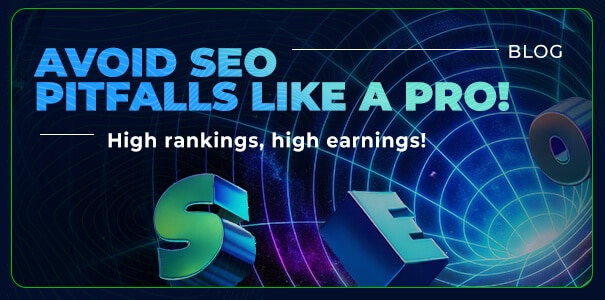
When hitting the SEO road (or any road for that matter), the chance of a wrong turn is always there. When you’re in the driver’s seat and the on-site optimization route is yours to plan and navigate, it’s paramount you get it right if you want to get into the good graces of Google and be rollin' in traffic.
Today our focus is on on-site optimization methods with search engines. We want to show you what you can do so the powers that be - the web crawlers - make your site stand out from the crowd like a dad dragged to a One Direction concert... but in a GOOD way.
From the main structure to metadatas, there are a ton of optimizations that are sure to help you be the browser’s one and only golden boy.
Good Content
First of all - and that’s probably the cornerstone of a good SEO strategy - you need good content. We’ve already talked about this in a previous post: browsers only recognize relevant & quality content nowadays.
What does that mean? Well for one it means that you’re gonna need unique content that browsers will be able to read and analyze. In other words, don't skip on the text even if your website is focused on media, such as pictures or video.
However, good content isn’t enough, it also needs to be fresh! You want to publish new content often enough to appeal to readers, while also making the bots happy by regularly providing new content to crawl.
A site more or less updated on the regular will have a much better crawl frequency than one that has gone down the tubes in updates.
Structuring the Content
Not only should the content be fresh, but it must have structure. There are a few ways one can go about this, but one way of structuring a site is to think of it like a book with chapters.
There's this term out there called “siloing,” and in the SEO world, it helps you group related information into appropriate sections within a site, which makes the overall user-experience way better.
Siloing is like the building blocks of your website; it's the foundation behind it. It helps you structure it, it helps you build upon it.
Siloing is also something you would do from the start - so if it’s not something you’ve done from the very beginning, forget about retroactively fitting it in, it’s probably too late unless you start from scratch.
The goal is to have a well structured, well organized site.
Structure that data & HTML!
Search engines love structured data markup at least as much as they love structured content.
Google even has a Structured Data Markup Helper you can use. Nonetheless, arguably the most popular choice for structuring data on your site is to use the Google, Microsoft, and Yahoo-collaborative effort that is schema.org.
Essentially, if you add markup to your site using something like schema.org, Search engines (including Google) will better understand the data contained within your site.
What does this translate to? Better results.
It means your content is indexed better, presented better, and maybe even presented more prominently over your competitors who aren’t using structured data markup.
Metadata Power
Probably the most known of the SEO tips and tricks is to put meta tags to good use - you know, the snippets of text behind the scenes that describe the content of a page.
The <meta> tag of course provides the metadata for the HTML document and it can be read by most browsers, including all the major search engines.
So the keywords that appear most on your web page... it’s good practice to put those same keywords in a meta keyword tag in the header of your site.
Using the meta description tag and meta categories tag is also good practice for concisely describing what your web page all about and properly labeling it.
There’s some debate whether search engines really pay much attention to the keyword meta tags - and as a stand alone element they probably don’t. But if you view-source any big, well-ranked website, they still use them - so it can’t hurt to have ‘em!
And while on the subject of keywords, the right selection of them is ever-important in an adult market overflowing with competition.
But we don’t want to get ahead of ourselves since we’ll be covering efficient keyword strategies in 2 weeks - so stay tuned!
Engage Engagement
Lastly, let’s not forget that web crawlers are not the only creatures that can generate more traffic for your website: users can do that too.
We’re talking about user-engagement.
The parallel between engagement and SEO is very real. All the elements on your website that contribute to a more engaged user can lead to a better ranking… without talking about the obvious fact that this can increase your traffic regardless of that.
And what’s one way to do this? With a call-to-action (CTA), of course! We’re talking about a “Share it,” “Comment,” “Follow,” and “Subscribe” type buttons, so make sure to have these next to your unique content. This is another key element of your overall on-site optimization strategy.
YOLO … so SEO!
Today we covered some well-respected SEO strategies that can be applied to your website to improve your rankings and increase your traffic. Once you master these on-site optimizations, you’ll have a no-holds-barred approach to SEO that never waivers. Everything we covered here today is something that could be applied to a future web-endeavor, and that’s always nice.
With that said, make sure all your sites are wisely optimized so they attract nothing but the quality, targeted, search-engine traffic your site deserves … for ultimate conversions.
Next week, we’ll be covering more SEO, but this time we’ll be going over off-site optimization and all the places you can share your links to better your ranking.
Until then!

